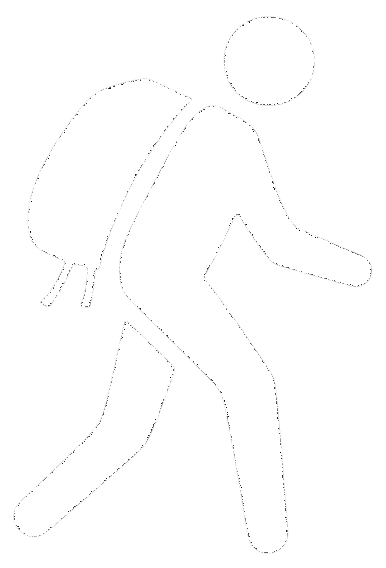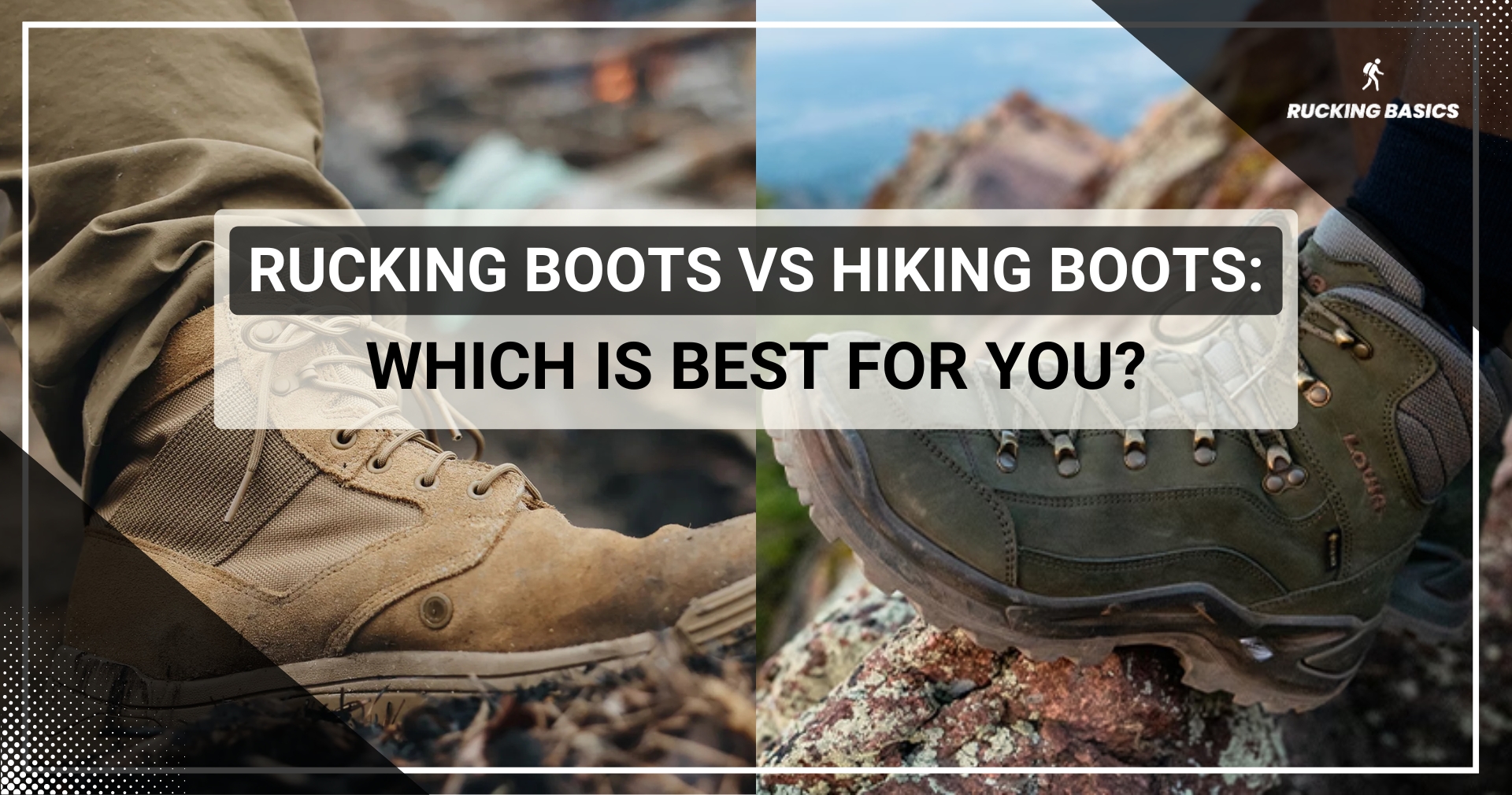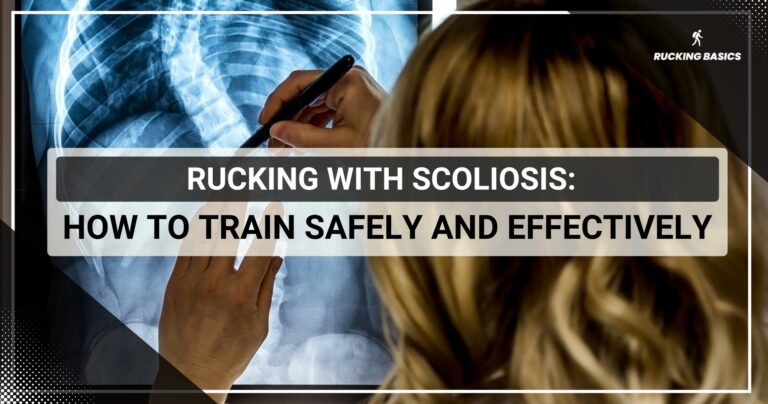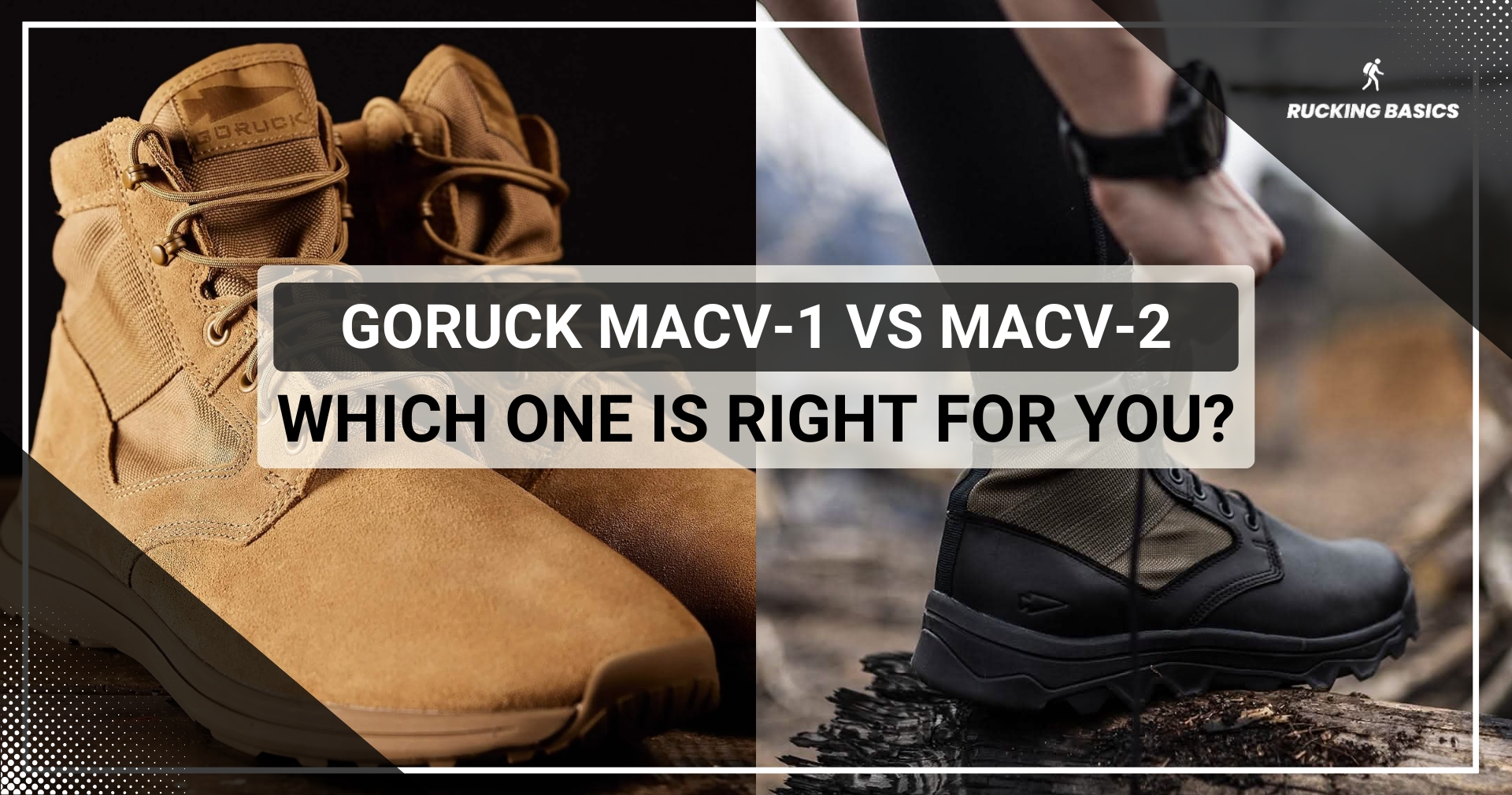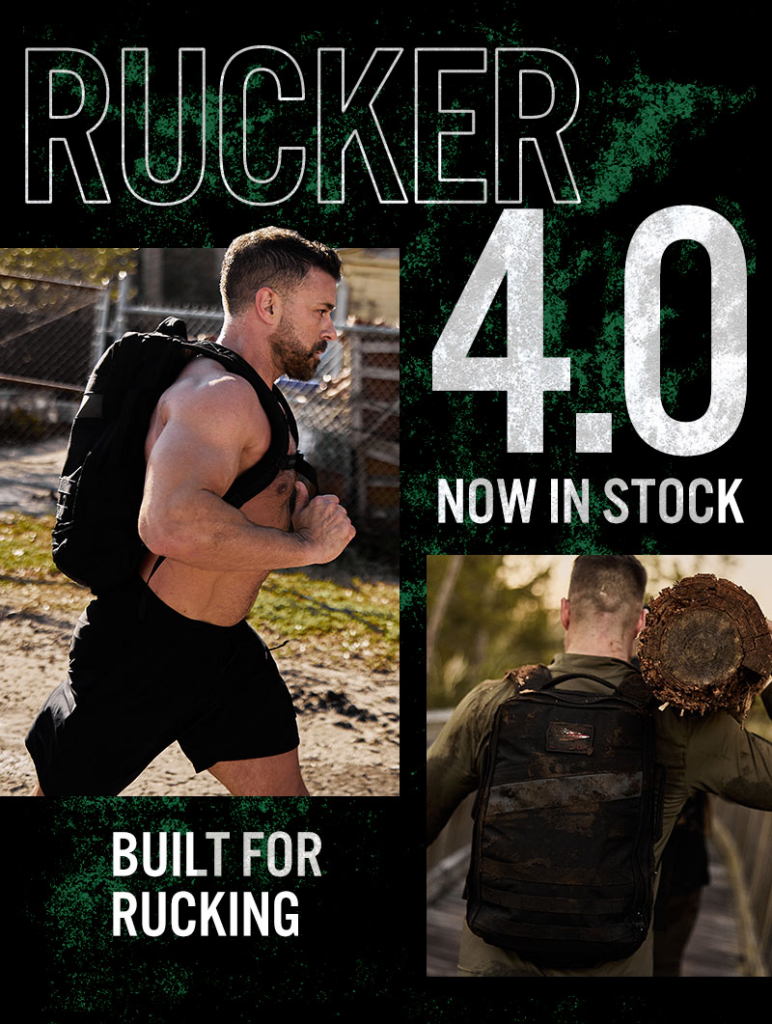The rucking community continues to grow, and many beginner ruckers come from other outdoor activities like hiking. Since they have equipment from a seemingly very similar activity, they wonder if it is possible to continue wearing the same footwear. That’s a good question and makes sense, financially-wise.
In short, rucking boots and hiking boots are not the same. Yes, they have similarities, but there are so many different models that we cannot a priori assume that they will provide the same level of comfort for both activities.
Join me, and let’s explore these two footwear options together, dissecting their features, nuances, and suitability for long-distance rucking and hiking.
Rucking Boots
Rucking boots are like the sturdy workhorses of footwear, built tough to handle whatever the trail throws your way.
They are made to last and protect you on different terrains and with heavy weights. The combination of highly durable materials and ankle support will make you stable even after a few hours on a ruck march.
For excellent examples, the GORUCK MACV-1 and the GORUCK MACV-2 stand out as top choices. These boots are lightweight yet durable and offer a perfect blend of stability and comfort.
But it’s not all about toughness, they are not work boots – comfort plays a big role too. That’s why rucking boots often come with cushioned insoles, giving your feet a cozy place and arch support.
Hiking Footwear
When it comes to outdoor adventures, hiking boots are an excellent option for their versatility.
Sure, hiking boots may not have been made specifically for rucking, but they are still way more durable than regular shoes. For many beginners, lightweight boot will be suitable because they are comfortable, usually have good grip, and are not susceptible to wear and tear like your running shoes.
Similarities Between Rucking Boots and Hiking Boots
Hiking and rucking shoes share many characteristics. Let’s see which ones.
Durability and Construction Materials
Rucking boots and hiking boots are made with a focus on durability. So, manufacturers usually use robust materials that can withstand outdoor adventures. You will probably notice tough leather uppers and reinforced stitching on both.
Ankle Stability and Support
Both rucking boots and hiking boots offer ample ankle support. Sturdy ankle cuffs and supportive designs keep your ankles stable and secure, reducing the risk of twists and sprains on uneven terrain.
Traction and Grip on Various Surfaces
In regards to staying surefooted on the trail, trail runners, rucking and hiking boots have you covered equally. Their outsoles are like high-performance tires, with rugged treads and grippy patterns that go into the ground with every step.
Waterproofing and Weather Resistance
Nobody likes soggy socks, neither ruckers nor hikers. Nine out of ten models come with waterproofing and weather-resistant features. Knowing your boots will keep your feet dry, you can ruck or hike a downpour or splash through puddles.
Differences Between Rucking Boots and Hiking Boots
Yes, they belong to the same category of footwear, but ruckers must still consider many differences before buying.
Weight and Flexibility
Rucking boots are built to carry heavy loads. That’s why they tend to be on the heavier side, with robust construction and thick materials that provide maximum support and stability under the weight of a loaded pack, which can be as much as 30% of your body weight. While this extra weight may impact agility a bit, it’s a trade-off that serious ruckers are willing to make for the added durability and security these boots provide. Also, with the advancement of materials, rucking, tactical boot, combat boot, and military boots (for special forces) are becoming lighter and lighter.
In contrast, hiking boot is designed to keep you moving quickly over varied terrain. They’re lighter and more flexible than rucking boots, allowing for greater freedom of movement and agility on the trail. While they may not offer the same level of support under heavy loads, hiking boots prioritize mobility, making them a popular choice for casual hikers and outdoor enthusiasts. If you are trying to set your personal best time, then they are definitely the right choice.
Cushioning and Comfort
Rucking boots often feature thick insoles and ample cushioning, providing a comfortable ride even on the most rugged trails. With every step, you’ll feel like you’re walking on clouds, thanks to rucking boots’ superior shock absorption and impact resistance.
On the other hand, hiking boots offer a more balanced approach to cushioning, giving adequate support without sacrificing comfort. While they may not have as much padding as rucking boots, hiking boots still offer enough cushioning to keep your feet happy and comfortable over long distances.
Load-Bearing Capacity
One of the key differences between rucking boots and hiking boots is their load-bearing capacity. Rucking boots are specifically designed to support heavier weights for extended periods.
On the contrary, hiking boots are better suited for lighter loads and shorter distances, such as when you go for a few hours in nature on Sundays and carry a light backpack with water and food. Don’t get me wrong; they can still easily handle moderate weights and distances, but don’t expect them to be perfect for carrying a heavy rucksack.
How to Choose the Right Boots for Rucking?
Since we are all primarily ruckers here, although we are outdoor enthusiasts in general, I will give you a few tips on choosing the right boots for rucking. And don’t forget that boots are on the top of the list of essential gear.
Assess Your Needs and Preferences
Choosing the perfect pair of boots for rucking begins with understanding your unique needs and preferences as a rucker. Consider the terrain you often go to — from rocky trails to muddy paths and everything in between. I know you can’t have one pair for every occasion, so choose the ones suitable for the places you go most often.
Think about the weather conditions you’re likely to encounter. So, is it going to be hot, rainy, or very cold in your area? Understanding the specific challenges of your rucking environment will help you narrow down your options.
Evaluate the Average Weight of Your Rucking Pack
Yes, you will definitely change the weight. Sometimes, you will increase it, and sometimes, you will decrease it. Still, it’s an important factor to consider when choosing ruck boots. What is the average weight you carry? Whether it’s a light daypack or a hefty rucksack filled with gear, the weight on your back can significantly impact the performance and comfort of your boots. For heavier loads, you’ll want boots with sturdy construction.
Test Multiple Pairs of Boots
Once you have a sense of your rucking needs and pack weight, it’s time to hit the stores and start trying on boots. Most of you will order rucking shoe, walking shoes, or any other footwear, including combat boots, online, but it’s great to try them on beforehand.
Don’t be afraid to spend some time experimenting with different brands, styles, and sizes to find the perfect fit. Walk around the store, test the boots on various surfaces, and focus on how they feel on your feet. It’s certainly not an entirely realistic test, but it will at least give you a rough idea of the features.
Right size
When it comes to rucking boots and hiking shoe, fit is everything. A properly fitting boot can mean the difference between a pleasant rucking experience and a painful one (blisters, hot spots, tendinitis, etc.)
Pay attention not only to the size but also to how the boots feel around your toes, heels, and ankles. You must have enough room for your feet to move without slipping or rubbing.
Seek Recommendations and Reviews
Before making a final decision, don’t hesitate to ask your friends and experienced ruckers. Reach out to fellow rucking enthusiasts, browse our website, and read Amazon.
If you’re looking for a trusted place to start, check out this GORUCK shoes review. It’s packed with insights into performance, comfort, and durability, helping you narrow down the best options for rucking footwear.
But, if I would to recommend a specific GORUCK shoes to start with, I would urge you to read this GORUCK Rough Runners review that breaks down a rugged and durable option that’s popular among ruckers.
No one can make your decision for you because each person is unique, but you will definitely gain insights into the performance and durability of different boot models. You can also learn more about specific features that are important to you, such as waterproofing, breathability, or traction, prioritizing boots that receive positive feedback in those areas.
Wrapping Up
Rucking boot is the go-to choice for serious ruckers, and I have no doubt about that. They will offer durability and support like no other, precisely what you need when carrying heavy loads over long distances.
This does not mean that hiking boots are bad, on the contrary. Some of the most comfortable shoes and boots I’ve ever worn were made for hiking. So, they can be a good choice for urban ruckers, casual ruckers, and outdoor enthusiasts who value comfort and agility.
But once you decide to increase the weight in your backpack and extend the distance, you will have to switch from running shoe and hunting boots to rucking footwear.
Frequently Asked Questions
In which terrain rucking boots outperform hiking boots and vice versa?
Rucking boots excel in rugged terrain, such as rocky trails or muddy paths, where stability and traction are paramount. On the other hand, hiking boots may be more versatile and comfortable on gentler terrain, such as well-maintained trails or flat surfaces, where agility and flexibility are more important than sheer durability.
Is there a notable difference in cost between high-quality rucking boots and hiking boots?
Generally, the best boots tend to be a bit more expensive than hiking boots due to their specialized design and construction. Some of features that increase the price are reinforced shanks, extra cushioning, and waterproofing, which can contribute to higher manufacturing costs. However, the price difference in the same quality categories is usually not that big.
How do rucking and hiking boots compare in terms of versatility for other outdoor activities besides rucking and hiking?
While both rucking boots and hiking boots are designed primarily for rucking and hiking, they can also be suitable for various outdoor activities. Rucking boots may be well-suited for backpacking, mountaineering, or working in rugged outdoor environments. Hiking boots offer more versatility and are comfortable for camping, trail running, or everyday wear, especially during winter.
